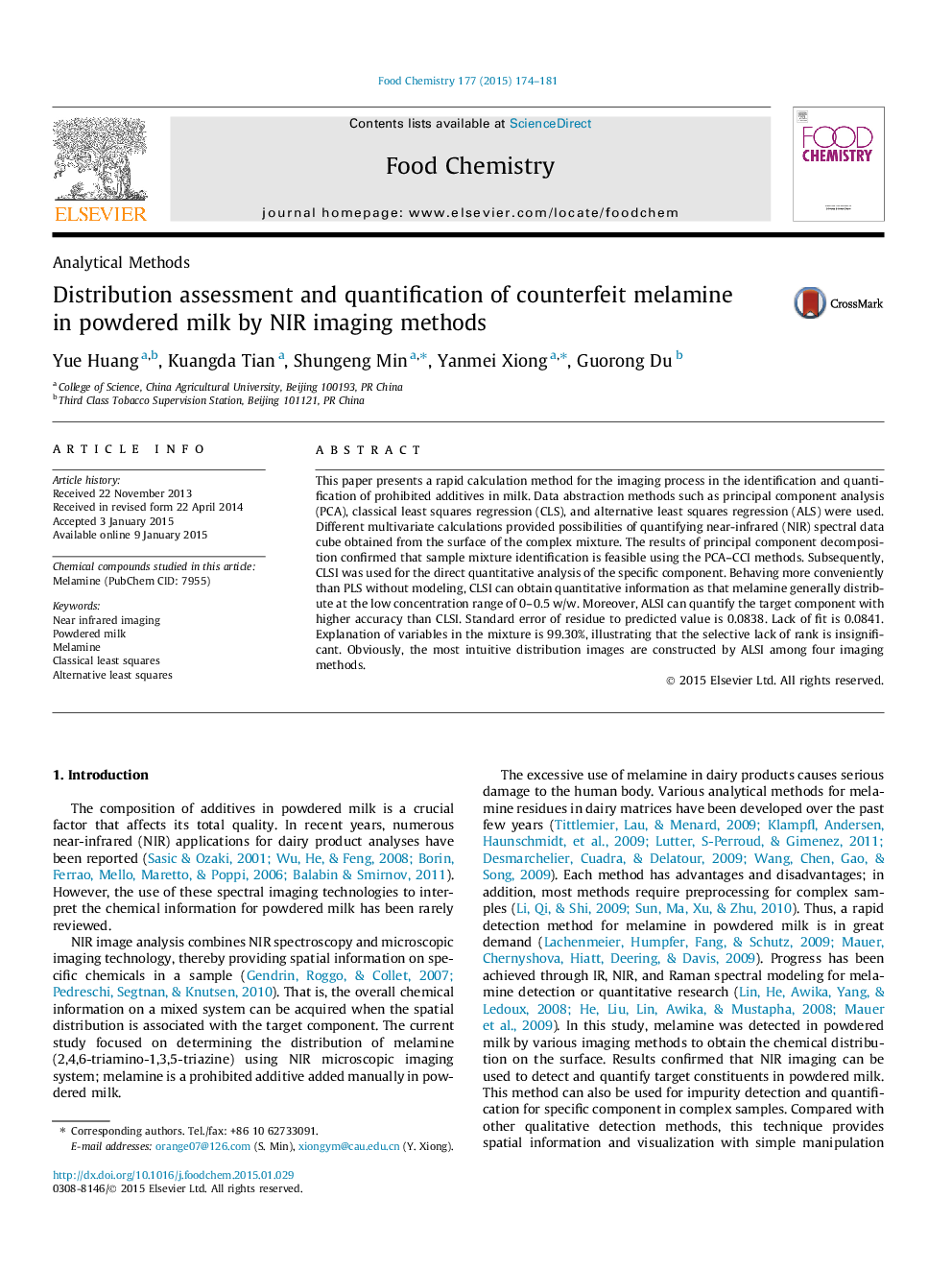| Article ID | Journal | Published Year | Pages | File Type |
|---|---|---|---|---|
| 7592815 | Food Chemistry | 2015 | 8 Pages |
Abstract
This paper presents a rapid calculation method for the imaging process in the identification and quantification of prohibited additives in milk. Data abstraction methods such as principal component analysis (PCA), classical least squares regression (CLS), and alternative least squares regression (ALS) were used. Different multivariate calculations provided possibilities of quantifying near-infrared (NIR) spectral data cube obtained from the surface of the complex mixture. The results of principal component decomposition confirmed that sample mixture identification is feasible using the PCA-CCI methods. Subsequently, CLSI was used for the direct quantitative analysis of the specific component. Behaving more conveniently than PLS without modeling, CLSI can obtain quantitative information as that melamine generally distribute at the low concentration range of 0-0.5Â w/w. Moreover, ALSI can quantify the target component with higher accuracy than CLSI. Standard error of residue to predicted value is 0.0838. Lack of fit is 0.0841. Explanation of variables in the mixture is 99.30%, illustrating that the selective lack of rank is insignificant. Obviously, the most intuitive distribution images are constructed by ALSI among four imaging methods.
Keywords
Related Topics
Physical Sciences and Engineering
Chemistry
Analytical Chemistry
Authors
Yue Huang, Kuangda Tian, Shungeng Min, Yanmei Xiong, Guorong Du,
